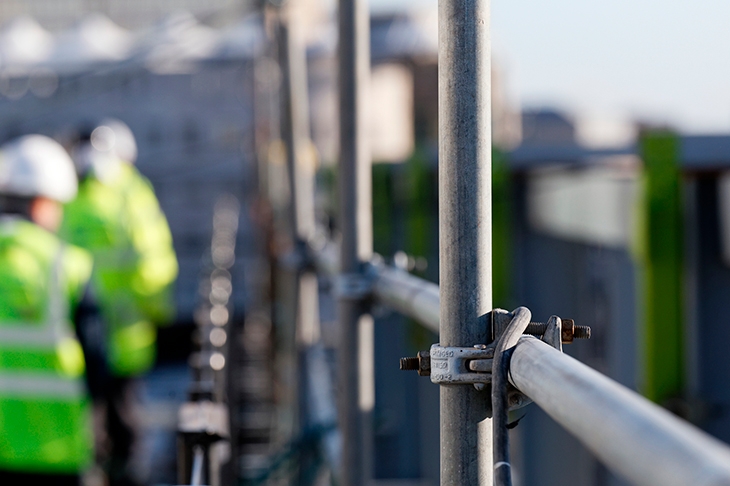Whenever I turned on the news last weekend, my husband took to humming the March to the Scaffold from the Symphonie fantastique. He was expecting a political decapitation. Political metaphors tend to the violent: toast, under a bus, the high jump.
Berlioz didn’t use échafaud, ‘scaffold’, in the title of his movement, but supplice, ‘torment’. But J.M. Neale, the author of ‘Good King Wenceslas’, wrote a less successful ballad on the martyrdom of Archbishop Laud that included these lines: ‘So steadfastly the scaffold-steps/ That good Archbishop trod/ As one that journeyed to his Home/ And hasten’d to his God.’
Scaffold has a different connotation from scaffolding, with its loud voices, transistors and non-woke workmen. Their apparatus is venerable, there being an item in the accounts of Durham Abbey for 1347-48 for 15d for putting up scaffolding. The Middle Ages were good at it, using wood (as inside the spire at Salisbury).
The origins of scaffold are wonderfully complicated. It is the same word as catafalque, which entered English much later, in the 17th century, in the Italian form catafalco. Similar words throve in the Romance languages, suggesting a popular Latin model catafalcum. In Spanish it was cadafalso. In Old Catalan it was cadafal. But we’d be wrong to think that Ellis Peters’ hero Brother Cadfael was named after a catafalque. His Welsh name is explained as cad (‘battle) and mael, with an initial mutation, (‘prince’).
The earlier origins of the catafalco are murky. You can’t just cherrypick words from different languages as originals, but philologists suggest that the cata- might have been adopted straight from Greek in a way that was fairly common and the fal element have come from phala, Latin for a wooden tower.
Wherever it came from, scaffold has done well in the industrial world.








Comments
Join the debate for just £1 a month
Be part of the conversation with other Spectator readers by getting your first three months for £3.
UNLOCK ACCESS Just £1 a monthAlready a subscriber? Log in